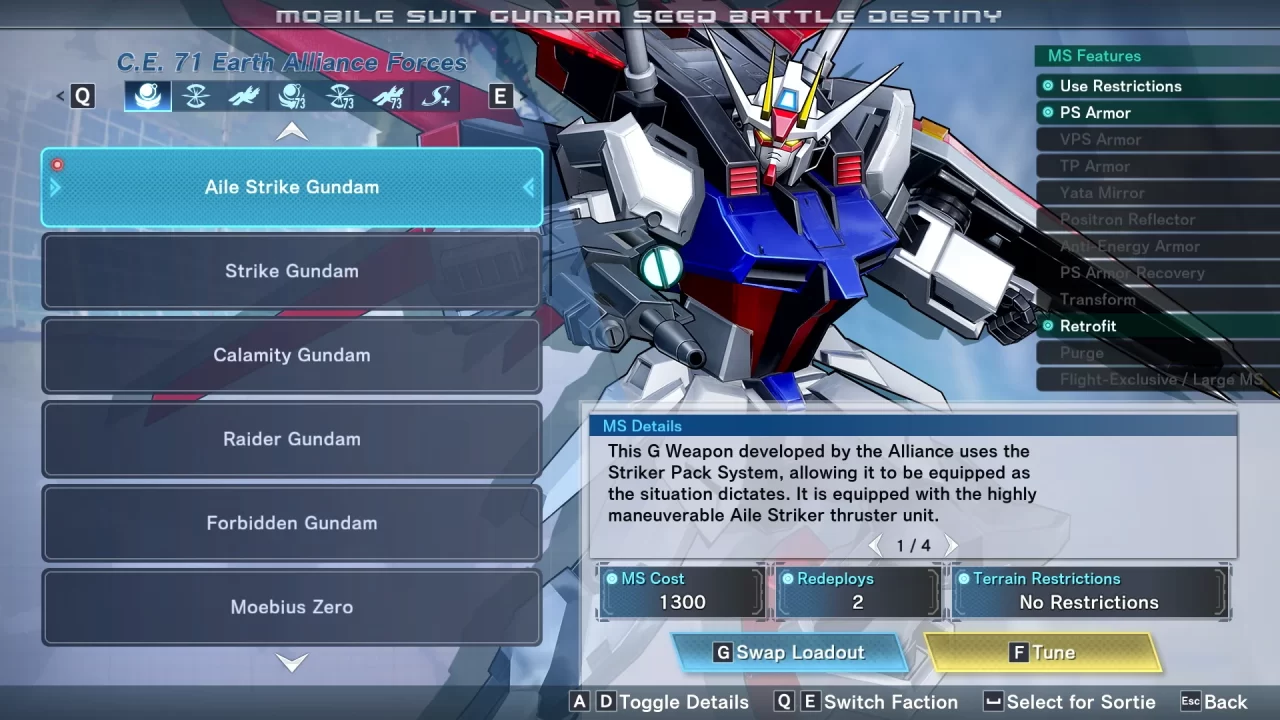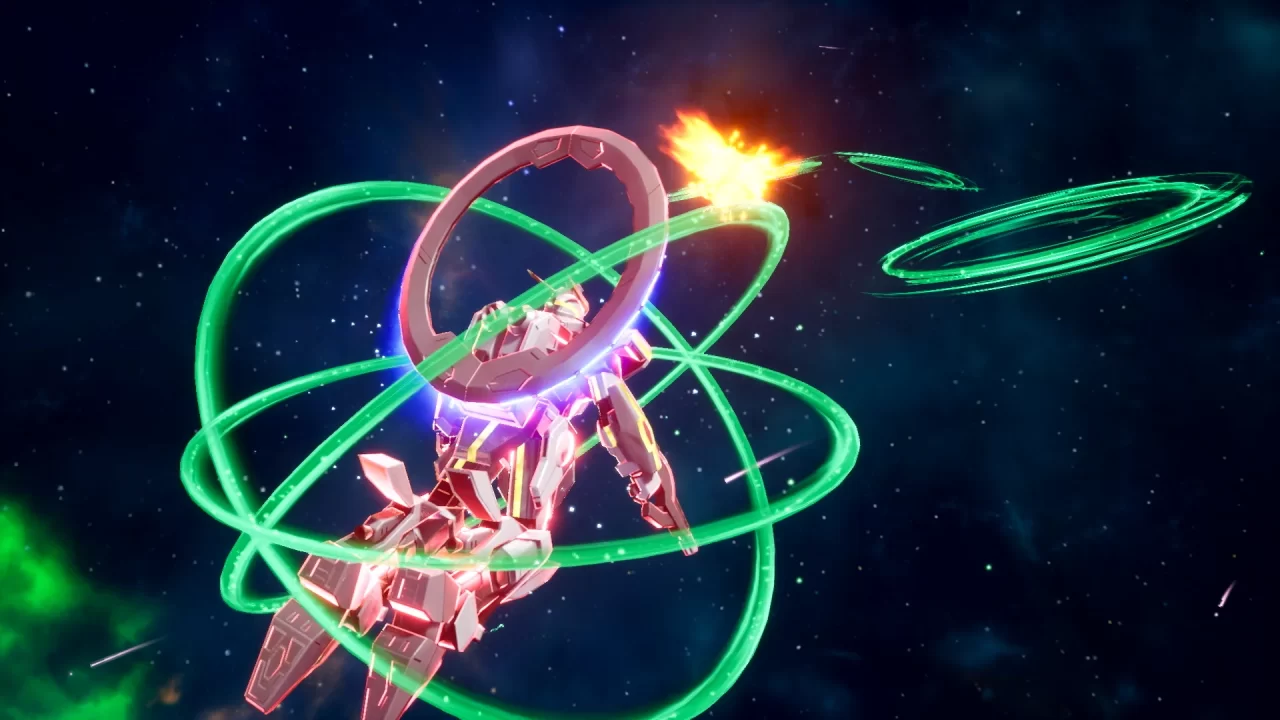Okay, I’ll admit it: I’m a Gundam fan. I enjoy the high-stakes mecha battles, epic science-fiction stories buoyed by political machinations, and the horrific and believable impact of war experienced by painfully human characters. I’ve been hooked on the franchise since watching Mobile Suit Gundam Wing, becoming entrenched in Universal Century lore not too long after (personal recommendation: even non-Gundam fans should watch Mobile Suit Gundam: The 08th MS Team!). My fondness for Gundam also extends to the Mobile Suit Gundam SEED series. While perhaps not a personal favorite of mine due to some conflicting thoughts on its sequel series, Mobile Suit Gundam SEED Destiny, it still makes for an enjoyable watch. I especially enjoyed the recent Mobile Suit Gundam SEED Freedom movie as a fitting series epilogue. I was, therefore, pleasantly surprised to hear about a Japan-only PlayStation Vita title finally localized in the form of Mobile Suit Gundam SEED Battle Destiny Remastered. Disappointingly, the game doesn’t have the same emotional impact as the anime series, though, in small doses, you can find diversionary fun in its action RPG mecha battles.
Mobile Suit Gundam SEED Battle Destiny Remastered follows the storylines of the first Gundam SEED series and its somewhat divisive sequel, Destiny, albeit in a very abridged fashion. The game’s paper-thin story is by far its most considerable disappointment, as the prejudicial conflict between the genetically enhanced Coordinators of ZAFT and the unaltered Naturals in the Earth Alliance is rather compelling in the actual anime series. I’d have adored an action RPG that finds your player-created pilot and their partner front and center in a story retelling events from Gundam SEED in great detail. Alas, that isn’t the case here: you get the CliffsNotes version of the two series’ storylines with a lot of content that is not centered directly on the mecha battles themselves cut out. Do you want to know who Lacus Clyne is or how Shinn knew Stellar before tragedy struck? Battle Destiny assumes you already know the overarching plotlines for Gundam SEED and Destiny, so it doesn’t bother with “pesky” narrative exposition.

So, as far as the plot is concerned, non-Gundam SEED fans need not apply, as they’d be incredibly lost from the start about what’s going on during missions. This issue becomes further exacerbated with the game’s side story content, dealing with titles such as the Mobile Suit Gundam SEED Astray and Mobile Suit Gundam SEED C.E. 73: STARGAZER that only diehard Gundam SEED fans will likely know. The game is an action RPG, so its lack of an actual storyline is particularly disappointing, given the inherent potential for an engaging sci-fi plot that the Gundam SEED franchise already possesses.
The central premise behind Mobile Suit Gundam SEED Battle Destiny Remastered is that you create a player-controlled pilot character and their AI-controlled partner to fight through various battle stages from the Gundam SEED universe. You can choose to have your character be either a Natural or a Coordinator, with both origins having strengths and weaknesses to consider. However, I should note that Coordinators have the best use of some of the more high-tier mobile suits collected in the game. You also choose to fight for either ZAFT or the Earth Alliance initially, which changes the perspective and objectives of the fights you encounter accordingly. You can also choose to join up with a third Archangel faction at specific points during story missions. When playing for the first time, your faction choices will limit the battles you can participate in, though you’ll unlock the other faction fights once you clear the game. Again, the potential for an exciting and immersive RPG experience exists here, but sadly, it’s squandered.
Once a battle starts, you fight through the stage with your selected mobile suit until you reach the mission objective. These objectives range from successfully defending a target to obliterating scores of enemies, and they can even change while fighting depending on what occurs. Upon completing a mission, you receive a ranking determining how many upgrade points you get towards mobile suit maintenance and how much experience your pilot and their partner receive towards leveling up their respective stats. Stats leveling and upgrading mobile suits help increase survivability for the next mission you participate in. As you advance, you unlock new pilots to control or acquire new mobile suits to upgrade as you see fit.
Beyond raising levels, pilots also have equippable special abilities, unlocked through advancing the story, to aid in the fight. Upgrading mobile suits involves investing points into their statistics, ranging from general health and defense to ammo and power boosts for the mech’s various weapons. Every mobile suit has unique weaponry and stats. Once I found suits that seemed to work best for my playstyle, I simply invested all my points into strengthening those particular ones to become a true powerhouse: Blu Duel Gundam and Waldfeld’s modified Gaia Gundam were my later mechs of choice.
Combat is fast and somewhat chaotic, especially when there are numerous enemies to contend with onscreen. You can lock on to opponents, but switching between them when searching for specific targets can get confusing. You can also switch between weapon types with simple button presses, speed up your mobile suit for quick travel or longer jumps (provided your thruster gauge doesn’t overheat), or unleash a melee combo attack close to an enemy. While I wasn’t as huge a fan of the more restrictive land and sea battles, I genuinely enjoyed the fights in the cold vacuum of space. There were noticeably sharp difficulty spikes depending on the battle, but thankfully, you can retry fights as often as you’d like. Overall, playing Mobile Suit Gundam SEED Battle Destiny Remastered is best left in smaller chunks so that you don’t burn yourself out on constant fighting.
Visually, this game is a remastered port of a PlayStation Vita title and doesn’t push the Switch to its graphical limits. Still, because battle maps are so huge and you often fight waves of enemies simultaneously, it takes a noticeable amount of time to load fights initially. Given the frenetic action, you can move the camera around relatively freely, which is good because you risk having it positioned at an awkward angle otherwise. The soundtrack is limited, though the BGM songs are catchy enough to get you invested in the fights. The game’s audio is only Japanese, and the sparse story bits you have here only really come up in ambient conversation sound bites mid-battle. So, while the voice acting is excellent, you’ll sometimes miss what’s said because you’re too distracted to read the subtitles. Overall, though, the localization and limited script work are superb.
I wouldn’t say Mobile Suit Gundam SEED Battle Destiny is a terrible game by any stretch of the imagination, but it could’ve been so much better. It successfully recreates the hectic mecha battles that the Gundam franchise is known for in an interactive format. I had fun playing it, even if I had to step away after every hour or two of play. I can only hope a future Gundam game can capture the true scope of the franchise in its entirety, but as it stands? Now that I’ve played this game, I have a nostalgic urge to rewatch Mobile Suit Gundam SEED again, so I think Mobile Suit Gundam SEED Battle Destiny Remastered made an impression, at the very least.




